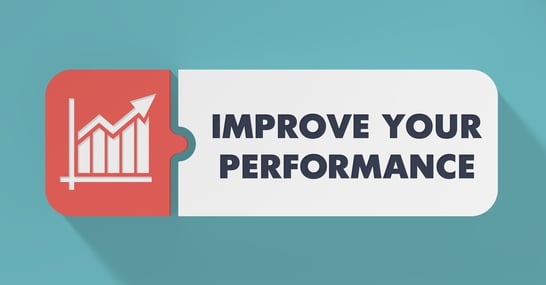Managing & Motivation Tips to Achieve High Performance (Part V)
Positive motivation drives high performance. In Part IV we looked at the six questions that enable managers and individual team members to drill down...
2 min read
.jpg) Bob Willert
:
Apr 17, 2017 12:00:00 AM
Bob Willert
:
Apr 17, 2017 12:00:00 AM

Many managers ask the wrong question when it they want to motivate their team. They say things like “What can we do to improve?” or “Where are we going wrong, so we can fix it?” To really engage everyone to continually do their best, the most powerful question a manager can ask an individual or a whole team is this:
How would you like it to be?
This question takes everyone out of the past attempts or their current situation, and propels them into the future – hopefully a perfect future. From "seeing" the future, teams and individuals can motivate themselves by following the ACED© coaching model. This is the ultimate managing & motivation tip.
A for Aspire
How would you like it to be? If everything were working perfectly, what would be actually happening? What would be going on around you? What would you be doing? these are questions for the aspiring team members.
Once the End Goal is properly established as a SMARTER Goal, the motivating manager helps the team to drill down into the detail, by asking those motivational questions, above. The End Goal gives everyone a frame of reference, so the questions produce real answers, and the whole tram clarifies what it aspires to.
The team, or the individual team member, sets an End Goal, then focuses on what it will be like when the goal is achieved. If that is what the team or the individual aspires to, step 2 in the ACED model comes automatically.
By the way, setting the End Goal and exploring A for Aspire meets the motivational needs of the M1 types.
C for Consider
If that’s where we want to be – where are we now? The manager asks two questions, and goes from there::
Draw up a list of what is going well – either as far as SPMI is concerned, a particular client’s supply chain function, or the team’s own teamwork.
Then draw one up for what could be working better. Do not ask what isn’t working. Few things are ever a total failure, but many things are either not very good, OK or good enough but could be improved. When you have the list, the team can look at each one and give it a score.
Let’s say we have a topic “POS communication with Client A’s warehouse to co-ordinate replacement deliveries from upline suppliers B and C.” and this gets a score of 6.
Now consider what it is that enables the team to give it a score of 6 (What's working?) Then ask what would have to change, or be introduced to get it to a score of 7, then 8, then 9, then a perfect 10.
At this stage the team isn’t trying to solve the problems, it’s just communicating in detail about how things are now. Which takes the team to Step 3.
E for Explore
The team knows what’s working, what could be working better, and knows why they gave that topic a 6. The team also agreed what should happen to get the score up to a 7 or an 8, etc.
E for Explore encourages and enables every single team member to explore the available options on the list, that would raise the score past 6, and to decide how to implement each option. This satisfies the M2 types; the problem-solvers.
The possible ways, the ideas – good, bad and indifferent – are shared, discussed, and decided on. This step will not only get the team pulling together to improve the client results, but it will throw up ideas that can be used elsewhere.
Once the team has agreed on a particular option to implement, the manager moves to Step 4.
D for Do
Talking and agreeing is one thing, acting on what the team has agreed is where the results come from. The SMARTER goal established specific, measurable, realistic, time-bound actions. Put them to use in Step 4. “You gotta do the Do!”
The Take-Away
Motivation comes from within each individual, whether it is a team issue or a client issue. Managers can come up with ideas and decisions for others to implement, but how much do the implementers learn and improve? Getting teams to the top of Maslow’s hierarchy – self-actualizing, peak performance – takes practical steps. ACED gives managers those steps.

Positive motivation drives high performance. In Part IV we looked at the six questions that enable managers and individual team members to drill down...

I love a challenge, and I think it's when people least expect you to do something that you often do your best. - Shayne Ward (English Musician) 8...

People The 3rd P is people. Great business advice may begin with corporate philosophy and promises to the marketplace, but it ends with the people...